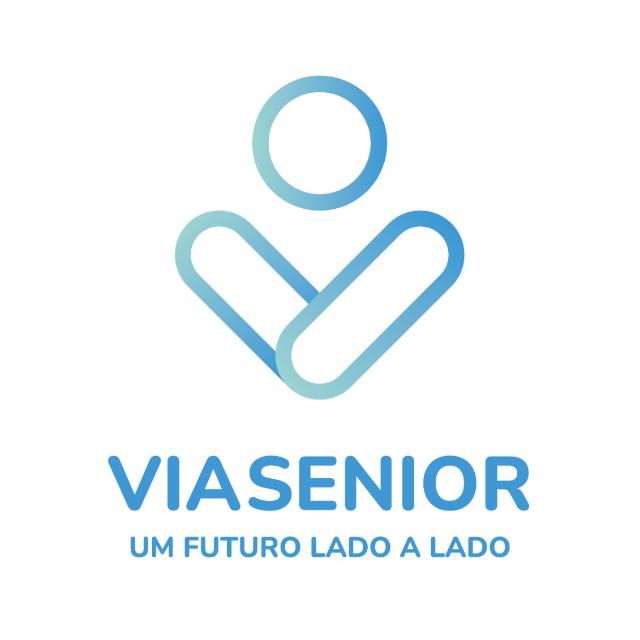Have you ever, while living with older family members (parents, grandparents) witnessed a moment when someone choked during a meal? Or has this happened several times? This problem exists and is called: dysphagia. And no, it is not normal for a relative of yours to have difficulty swallowing while eating their meal. If you are interested in understanding a little better what Dysphagia is, please find below a detailed article on this topic.
It is estimated that 10 to 20% of seniors have difficulty swallowing drinks or food, that is, in forming and moving the bolus from the mouth to the esophagus. They tend to change their food choices to ones that are easier to chew, but nutritionally poorer and monotonous, contributing to unintentional weight loss.
This symptom is termed dysphagia, and is characterized as an alteration in the swallowing of liquid and/or solid food, encompassing all the motor, behavioral, sensory, and preliminary acts of swallowing. Thus, dysphagia represents a major compromise in the well-being and social aspects associated with feeding of the individual.
Learn about some factors that negatively influence swallowing:
- Advanced Age;
- Cognitive changes;
- Neurological disorders;
- Oncological diseases;
- Sensory deficits (visual, taste, smell);
- Impaired oral health;
- Dependence on food;
- Taking some medications;
- Apraxia, inability to perform normally coordinated movements.
Dysphagia is particularly prevalent in individuals with neurological diseases, such as Parkinson’s disease and Alzheimer’s disease, both of which are especially prevalent in seniors. However, it is an underdiagnosed disease, with approximately 75% of dysphagia cases remaining undiagnosed.
Dysphagia if not identified, diagnosed, and treated can cause: involuntary loss of weight and muscle mass, malnutrition, and dehydration due to a decrease in food intake.
Dysphagia is a determining factor for a poor clinical prognosis, being a cause of decreased functional capacity, episodes of aspiration pneumonia and, consequently, frequent and prolonged hospital admissions.
These are signs of dysphagia and warning signs of difficulty swallowing:
- Choking episodes during and outside of meals;
- The need to make several attempts to swallow;
- Coughing during or after a meal;
- Among others.
Thus choking on food, water or other liquids cannot be considered “normal” for seniors. And they can lead to respiratory infections or aspiration pneumonias because instead of swallowing the food, the individual inhales it and it passes into the lungs.
The severity of dysphagia can range from moderate swallowing difficulty to complete inability to swallow.
The modified texture diet is indicated in situations where there are recurrent choking episodes, absent teeth, and cognitive impairment. This type of diet decreases the risk of choking by minimizing motor and oral processing. In addition, it promotes greater and better food intake, combating the fatigue associated with the feeding process. However, homemade texture-modified diets can compromise nutritional intake, particularly in older adults, so ready-to-use meal versions, such as Meritene® Nutrition Boosted Nutrition adapted staple food solutions, can and should be considered for nutritional intervention and rehabilitation of dysphagia, as well as Resource® texture-modified thickeners and oral nutritional supplements on the advice of a physician.
Individuals with dysphagia often have a water intake that is well below their needs, and they need to use thickeners to adapt the texture of the liquids to be ingested. It is essential to reinforce the importance of hydration in the appropriate texture, using traditional drinks such as water or flavored waters, infusions, and diluted juices.
Adaptations to the texture of the diet and liquids can be achieved, handily, through practical solutions:
- Crush the food using a fork, ensuring a soft and smooth texture;
- Crush the food using a blender, ensuring a homogeneous texture;
- Add cooking sauces, milk, cream, butter to the crushed foods to provide greater creaminess to the preparation;
- Avoid fruits with seeds (eg kiwi, strawberry) or juicy (eg citrus, pineapple, plum), fibrous foods (eg green beans, sprouts, cod, mango, pineapple) or dishes with two consistencies, i.e., solid and liquid (eg pasta or rice soup, gelatin), because they make it difficult to form a cohesive food cake.
To facilitate swallowing, the patient can use a dessert spoon to swallow meals and control the volume of food in the oral cavity, avoiding the use of straws and syringes. The approach to the dysphagic patient should be carried out by a multidisciplinary team, which includes the physician, the nutritionist, and the speech therapist, who can assess the patient in its various dimensions and enhance rehabilitation.
Are you ready for a little Q&A?
- WHAT IS DYSPHAGIA?
Difficulty or disturbance in swallowing liquid and/or solid food, encompassing all the motor, behavioral, sensory, and preliminary acts of swallowing. - WHICH HEALTH PROFESSIONAL SHOULD YOU CONSULT IN CASE OF SUSPICION OF DYSPHAGIA OR ALTERATION IN THE SWALLOWING OF LIQUID AND/OR SOLID FOOD?
In case of suspicion, you should consult a speech therapist or physician for evaluation. If dysphagia is diagnosed, a multidisciplinary approach should be taken, involving the physician, dietitian, and speech therapist. Together they will assess the patient in his various dimensions and enhance his rehabilitation. - WHAT STRATEGIES CAN BE ADOPTED AT MEALTIMES TO REDUCE THE RISK OF CHOKING?
In this situation the adoption of a modified texture diet is indicated. This diet decreases the risk of choking. In the modified texture diet there is a change and adjustment of the texture and viscosity of liquid and/or solid foods in order to make the food safe and appropriate to the nutritional needs of the dysphagic patient or patient with chewing and/or swallowing difficulties. - HOW TO PREPARE A MODIFIED TEXTURE DIET?
The recommendations of the speech therapist and nutritionist should be followed in choosing or changing and adapting the texture of solid and liquid foods and also in adjusting the volume of food in the oral cavity during ingestion, depending on whether a greater or lesser degree of dysphagia is identified. These are some of the practical strategies:
Crush the food using a fork, ensuring a soft and smooth texture;
Crush the food using a blender, ensuring a homogeneous texture;
Add cooking sauces, milk, cream, butter to the crushed foods to provide a creamier preparation;
Avoid fruits with seeds (eg kiwi, strawberry) or juicy (eg citrus, pineapple, plum), fibrous foods (eg green beans, sprouts, cod, mango, pineapple) or dishes with two consistencies, ie solid and liquid (eg soup or rice, gelatin), as they make it difficult to form a cohesive food cake. - WHAT ARE THE NESTLÉ HEALTH SCIENCE ARTICLES FOR THE NUTRITIONAL MANAGEMENT OF PATIENTS WITH DYSPHAGIA OR DIFFICULTIES IN CHEWING AND/OR SWALLOWING?
Meritene® adapted staple foods: Meritene® Instant Cereal (milky and non-dairy) and Meritene® Instant Fruit Compote
Thickeners: Resource® Thickener and Resource Thickener Clear
Oral nutritional supplements with adapted texture: Resource® Crema 2.0, Resource® Dense and Resource® Diabet Dense.
Food for specific medicinal purposes. Important: use under medical supervision. All are suitable as a single food source, with the exception of thickeners.


